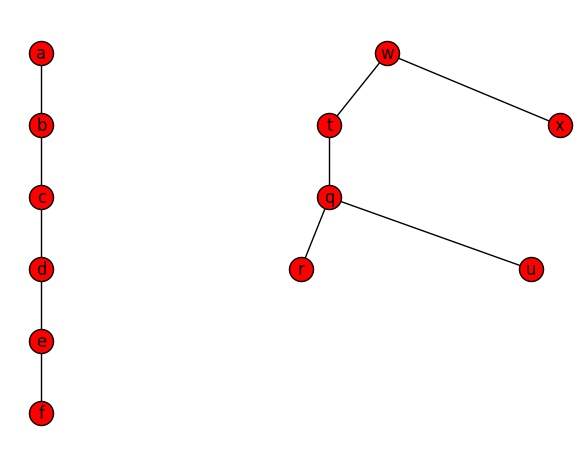NetworkX only provides basic functionality for visualizing graphs. It looks ugly to draw trees with its built-in graph layout. This article presents how to draw beautiful trees with pygraphviz and convert the format between NetworkX and Graphviz (dot).
1. Install PyGraphviz
To install pygraphviz on macOS,
$ brew install graphviz
$ sudo pip install pygraphviz
2. Draw trees with PyGraphviz
We use node positioning algorithms provided by Graphviz for tree drawing. Graphviz is a package for drawing graphs specified in DOT language scripts. It also provides a set of tools that can generate and/or process DOT files. PyGraphviz is a Python interface to Graphviz for accessing the Graphviz graph data structure and layout algorithms.
graphviz_layout is a wrapper for pygraphviz_layout that creates node positions for a graph using Graphviz. Note that in new versions of NetworkX, graphviz_layout is moved to nx.drawing.nx_agraph. Import it explicitly by,
from networkx.drawing.nx_agraph import graphviz_layout
pos = graphviz_layout(G, prog='dot')
# Interfaces
graphviz_layout(G[, prog, root, args]) # Create node positions for G using Graphviz.
pygraphviz_layout(G[, prog, root, args]) # Create node positions for G using Graphviz.
Here is an example. The source code is hosted on my GitHub, here.
import networkx as nx
import matplotlib.pyplot as plt
from networkx.drawing.nx_agraph import graphviz_layout
def main():
# Create a directed graph
G = nx.DiGraph()
# An example
l=[ ('a','b'),
('b','c'),
('c','d'),
('d','e'),
('e','f'),
('w','x'),
('w','t'),
('t','q'),
('q','r'),
('q','u')]
# Build up a graph
for t in l:
G.add_edge(t[0], t[1])
# Plot trees
pos=graphviz_layout(G, prog='dot')
nx.draw(G, pos, with_labels=True, arrows=False)
plt.savefig('draw_trees_with_pygraphviz.png', bbox_inches='tight')
plt.show()
if __name__ == '__main__':
main()
which produces,

Fig. 1: A tree drawn with NetworkX and PyGraphviz
3. Format conversion between Networkx and Graphviz AGraph (dot)
NetworkX provides interfaces to convert the format between NetworkX and Graphviz AGraph (dot).
from_agraph(A[, create_using]) # Return a NetworkX Graph or DiGraph from a PyGraphviz graph.
to_agraph(N) # Return a pygraphviz graph from a NetworkX graph N.
write_dot(G, path) # Write NetworkX graph G to Graphviz dot format on path.
read_dot(path) # Return a NetworkX graph from a dot file on path.
The following snippet code shows how to convert the format between them.
import networkx as nx
G = nx.complete_graph(5) # <networkx.classes.graph.Graph object at 0x1057c5850>
# nx --> dot
A = nx.nx_agraph.to_agraph(G) # <AGraph complete_graph(5) <Swig Object of type 'Agraph_t *' at 0x1032eb8a0>>
# dot --> nx
H = nx.nx_agraph.from_agraph(A) # <networkx.classes.graph.Graph object at 0x1057c5310>
After a graph is converted into the format dot, we can process graphs using PyGraphviz. Refer to PyGraphviz: AGraph Class for the detailed operations.
References:
[1] PyGraphviz